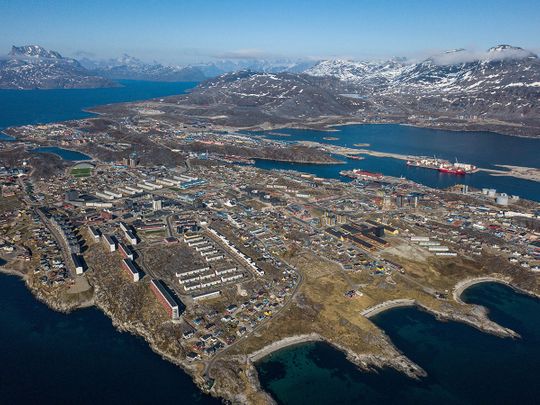
What makes Greenland so appealing that Donald Trump wants to buy it?
The US President’s decision to cancel a visit to Denmark next month after his offer to buy Greenland was rejected has thrust the ice-covered semi-autonomous Danish territory into the spotlight.
Greenland is where the Earth’s refrigerator door is left open, where glaciers dwindle and seas begin to rise. New York University air and ocean scientist David Holland, who is tracking what’s happening in Greenland from both above and below, calls it “the end of the planet”. In many ways, this place is where the planet’s warmer and watery future is being written.
And according to one expert, the diplomatic row that has erupted between Washington and Copenhagen over Greenland is just one part of a broader strategic battle being waged over control of the Arctic.
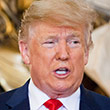
Based on Prime Minister Mette Frederiksen’s comments, that she would have no interest in discussing the purchase of Greenland, I will be postponing our meeting scheduled in two weeks for another time.
Trump cancelled a trip to Denmark and launched a war of words with his Danish counterpart, Prime Minister Mette Frederiksen, after she rejected his idea of the US buying Greenland as “absurd”. According to Mikaa Mered, professor of polar geopolitics at Paris’ ILERI institute of international relations, Trump’s unsolicited advances on the autonomous territory were a way to indicate US interest in the resource-rich Arctic.
Here’s a look at what makes Greenland so special:
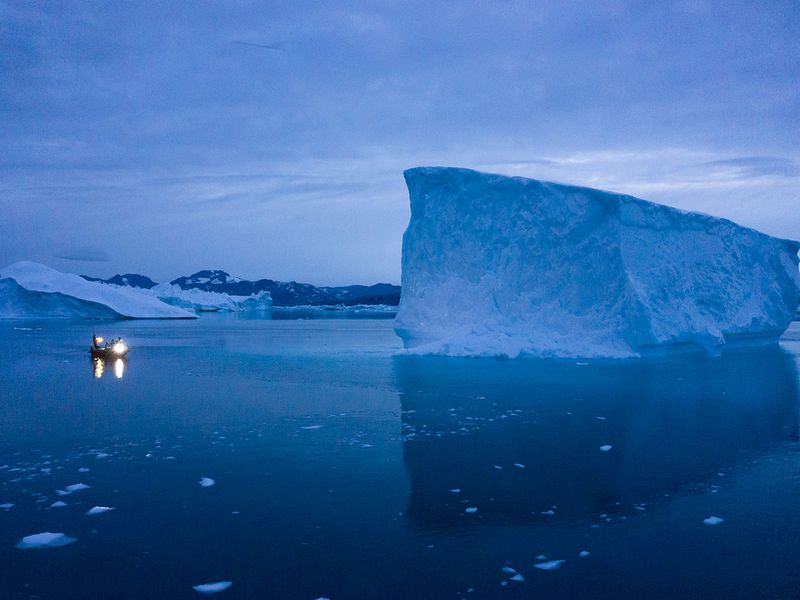
Where is Greenland?
The world’s largest island sits between the Atlantic and Arctic oceans. A 1.7-million-sq km ice sheet covers 80 per cent of the Arctic territory. Greenland’s 56,000 residents are mainly Inuits, the indigenous people. They are concentrated on the West Coast in small towns and hamlets or remote coastal settlements where life revolves around fishing and the hunting of seals and whales.
How is it governed?
Greenland is part of the Danish realm along with the Faeroe Islands and has its own government and parliament, the 31-seat Inatsisartut. In 1979, Greenland gained home rule from Denmark. Its premier is Kim Kielsen of the left-leaning Siumut party. A police officer-turned politician, Kielsen has been in office since 2014.
How is its economy?
Greenland’s economy depends of fisheries and related industries, as well as annual subsidies of 4.5 billion kroner ($670 million) from Denmark, which handles its foreign affairs and defence matters.
Greenland is not for sale. Greenland is not Danish. Greenland belongs to Greenland. I strongly hope that this is not meant seriously.
How is the basic infrastructure in Greenland?
Greenland lacks basic infrastructure for its tiny population of 56,000. There are no roads between the country’s 17 towns and only one commercial international airport, forcing people to travel by sea or air. Investors from the United States and Canada have been watching for signs Greenland will get a flagging mining programme back on track to exploit vast mineral resources including uranium and rare earths. However, due to a commodity price slump and a morass of red tape, Greenland — which is three times the size of the large US state of Texas — has only has one small operating mine. Greenland also has an estimated 50 billion barrels of offshore oil and gas reserves, as yet unexploited.
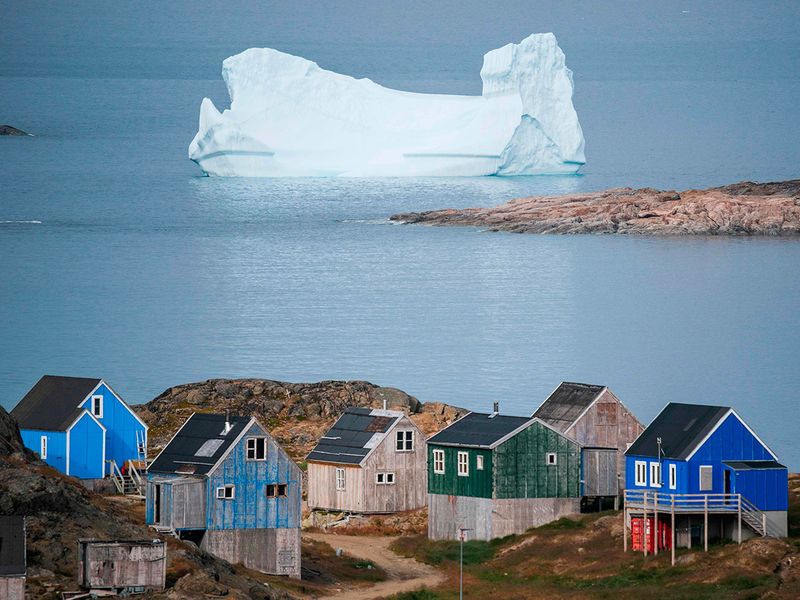
What about climate change?
The effects of climate change have been particularly dramatic for Greenland, which has seen one of its biggest ice melts on record this summer, contributing to a global rise in sea levels. Due to global warming, it is believed that oil and other mineral wealth could become more accessible in the Arctic — and Greenland. Nations including Russia, China, the US, and Canada are racing to stake as strong a claim as they can to Arctic lands, hoping they will yield future riches. If these resources are successfully tapped, they could dramatically change the island’s fortunes. However, no oil has yet been found in Greenlandic waters and the thickness of the ice means exploration is only possible in coastal regions.
We are open for business, but we’re not for sale.
What are the other resources?
In 2013, the sparsely populated island removed a 25-year-old ban on uranium mining since the element is often found mixed with other rare earth metals used for smartphones and weapons systems. A southern Greenland mine could be the largest rare-earth metals deposit outside China, which currently accounts for more than 90 per cent of global production. However, conditions are far from ideal and searches for minerals have stalled. Chiefly because of poor infrastructure, lack of sufficient manpower and long winters with frozen ports, 24-hour darkness and temperatures often below minus 30 Celsius in the northern parts.
Did anyone else try to buy Greenland earlier?
Yes — the US! Washington also tried to buy the world’s largest island in 1946 and offered Denmark $100 million for Greenland after flirting with the idea of swapping land in Alaska for strategic parts of the Arctic island. Denmark turned the offer down then as well.
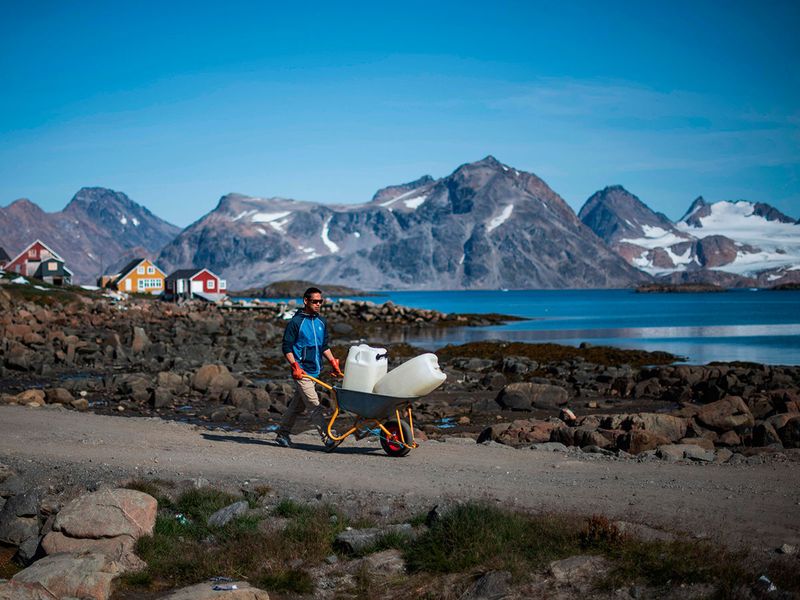
So what happened to Alaska?
The Alaska Purchase was the US acquisition of Alaska from the Russian Empire. Alaska was formally transferred to the US on October 18, 1867, through a treaty ratified by the United States Senate and signed by President Andrew Johnson. The total price paid for the territorial transfer was $7.2 million.
I don’t want to predict an outcome, I’m just saying the president, who knows a thing or two about buying real estate, wants to take a look at a Greenland purchase … And Denmark owns Greenland, Denmark is an ally, Greenland is a strategic place, up there. And they’ve got a lot of valuable minerals.
Did the US buy any other land in its history?
Yes. The Louisiana Purchase was the acquisition of the territory of Louisiana by the US from France in 1803. In return for $15 million, or approximately $18 per square mile, the US acquired a total of 2.14 million sq km. The treaty was negotiated by French Treasury Minister François Barbé-Marbois (acting on behalf of Napoleon) and American delegates James Monroe and Robert R. Livingston (acting on behalf of President Thomas Jefferson).
Why is Greenland so important to the US?
Greenland is strategically important for the US military and its ballistic missile early-warning system since the shortest route from Europe to North America runs via the Arctic island. The US United States maintains an airbase in Thule in Greenland’s northwest under a 1951 treaty with Denmark. The island, whose capital Nuuk is closer to New York than the Danish capital Copenhagen, boasts mineral, oil and natural gas wealth. But development has been slow, leaving its economy reliant on fishing and annual subsidies from Denmark.
So why can’t Denmark sell off Greenland?
Greenland, once a colony of Denmark, became a formal territory of the Nordic kingdom in 1953 and was granted broad self-governing autonomy, excluding only foreign affairs and defence, under legislation passed a decade ago.
Any sale would require a change to Greenland’s legal status through an amendment to Denmark’s constitution. Since 2009 Greenland has held the right to declare independence from Denmark. If Greenland do so, it could choose to become associated with the United States. But few Greenlanders see independence as viable given their economic dependence on Denmark, part of the affluent European Union. “The only way Trump would be able to buy Greenland would be to give them an offer they couldn’t turn down,” said Aalborg University professor Ulrik Pram Gad, a former Greenland government official.
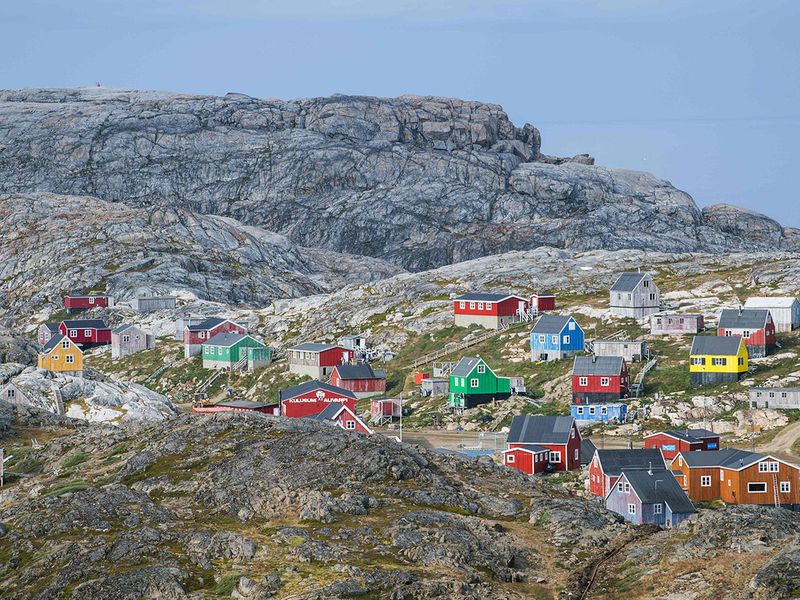
Is the US sending a message in trying to buy Greenland?
Mered said Trump’s offer to buy Greenland was a signal to Arctic nations and China, which has shown interest in the region, which is crucial for the control of new shipping routes opening up as ice sheets melt because of global warming. “When it comes to the Russians, [Trump’s] logic is to say: ‘You won’t always be the main power in the Arctic even if you are the chair of the Arctic Council in 2021’. And when it comes to the Chinese, the idea is ... ‘We won’t let you get a foothold in Greenland’.”
He said the US has already increased its presence by re-establishing a consulate in Greenland’s capital Nuuk, and helping to finance new airports, education and social programmes. “The end goal is not to acquire Greenland per se but at least some new territory, some new pieces of land,” he said.
Let’s assume that Greenland indeed got sold. How would that change the world?
A hypothetical acquisition of Greenland would dramatically upend our view of what constitutes the United States. At 836,000 square miles, it would top the 828,000-square-mile Louisiana Purchase and become the largest expansion in American history.

Greenland is almost a quarter of the size of the entire US — and would immediately become the largest state. It’s 1.5 times the size of Alaska, and almost as big as the original 13 colonies combined.
The US is officially the third largest country on earth, behind Russia and Canada. But that’s only if you count territorial waters. If you look only at land area, China passes the US for the third slot. The acquisition of Greenland would change that. The island is bigger than Mexico and with it the US would become the undisputed second-largest country on earth.
—With inputs from New York Times, AFP & Reuters








